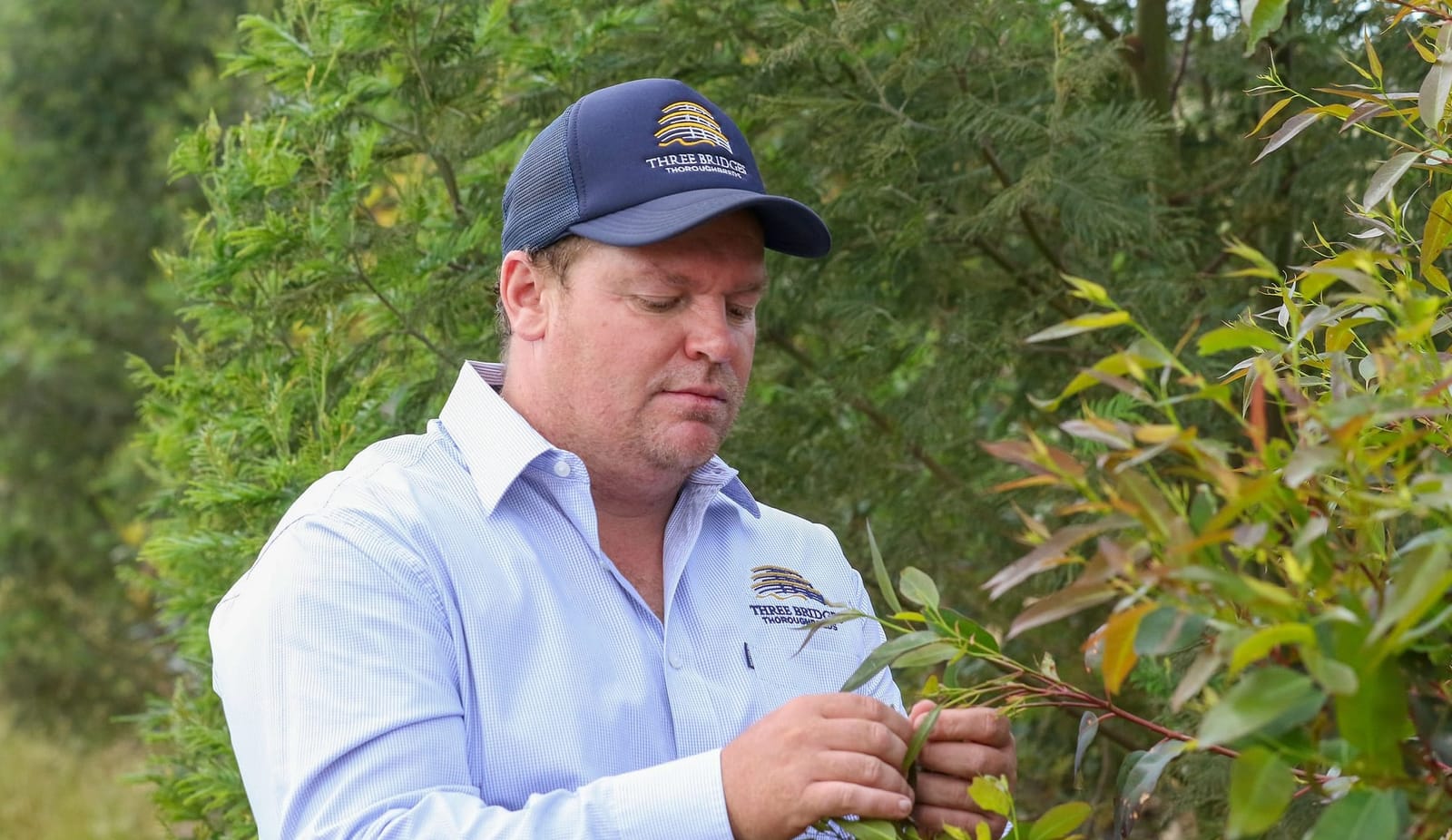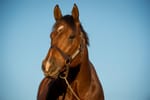The article was written for the Magic Millions magazine in 2023 and has been republished with permission. The 2024 edition of the Magic Millions magazine is now available.
Toby Liston is the studmaster of Three Bridges Thoroughbreds, a farmer of sorts and a greenie of sorts. He breeds racehorses and raises children, has stared down three floods in a decade, and some days, when life has more toe than a Roman sandal, he wonders if it’s all worth it. Still, Liston wants to become the first carbon-neutral horse farm in Australia.
“It’s not really a case of why I want to do it anymore, but more that I’m just doing it,” he says. “To get anything good in life, you have to give up something, and that might be a social life if you’re a footballer or a doctor, or any profession really. In farming, it’s no different. To get something good from it, you have to give up something good.”
Three Bridges Thoroughbreds is on 1500 acres of Victorian country farmland. Five kilometres of it hugs the Loddon River, which has brought its own headaches in recent times but, ordinarily, is a gift from mother nature.
The property is vast and forgiving. It’s the type of land that produces a lot when asked, which is why this rich region is planted with canola, wheat and irrigated lucerne, and why Three Bridges is one of a number of thoroughbred farms now dotting the district.
The Listons have owned theirs since 2005, migrating from saline land in South Australia to the fertile fields of Eddington, Victoria. Most days, farm life is about fixing fences, managing stock and getting by, but other days, there’s room to think bigger and on those days, Liston is farming outside the square.
“We have very fertile land here and we’ve planted 20 percent of it for conservation,” he says. “It’s probably closer to 25 percent that we’ve revegetated now, so we’ve essentially given up a quarter of incredible land, but it helps the horses, it helps the land and it helps the aesthetics of the farm. It all goes back to that thing of giving up something to get something, doesn’t it?”
Making Three Bridges greener started 15 years ago. Since then, the Listons have planted 60,000 trees across the property, and their plantings are deliberate. Every paddock is double-fenced with a tree lane running between, and the tree-lined borders are 30 metres thick in most instances.
“The horses are more settled, they’re calmer and happier,” Liston says. “There are a lot of wind benefits, too. In winter, if you have one line of trees, the wind can hit those trees and take about 15 metres to get back to its full force.
“If you’ve got 30 metres of trees, as we do, the wind will hit those trees and take about 150 metres to get back to its full force. That 150 metres of space is warmer for the horses, and so they don’t spend as much of their energy keeping warm. They can spend that energy growing, instead.”
“The horses are more settled, they’re calmer and happier"
There’s a lot of grazing lost at Three Bridges to this greening, but it’s worth it, according to Liston.
“When we first started this, we probably didn’t have a horse good enough to take to Magic Millions in January,” he says.
“And that means it probably wasn’t a horse good enough for breeding either. But since the introduction of our environmental play, which was the best part of (18) years ago, we’ve got better, stronger horses to sell. We look back now and think, thank god we did this.”
Over the course of 18 years, the effort required to plant Three Bridges has been phenomenal. During the droughts, Liston and his wife Sarah were watering saplings six times a day. People told them they’d have weak trees, but that was preferable to dead trees.
“When we first moved in, we were known as the weirdos with horses and trees,” Liston says. “We were giving up 30 metres around the whole boundary, and people couldn’t believe that.”
In 2005, when the Listons relocated to Victoria, they were looking for good ground. In South Australia, they’d had incredible infrastructure but the land wasn’t forgiving, and they wanted that in reverse when they moved.
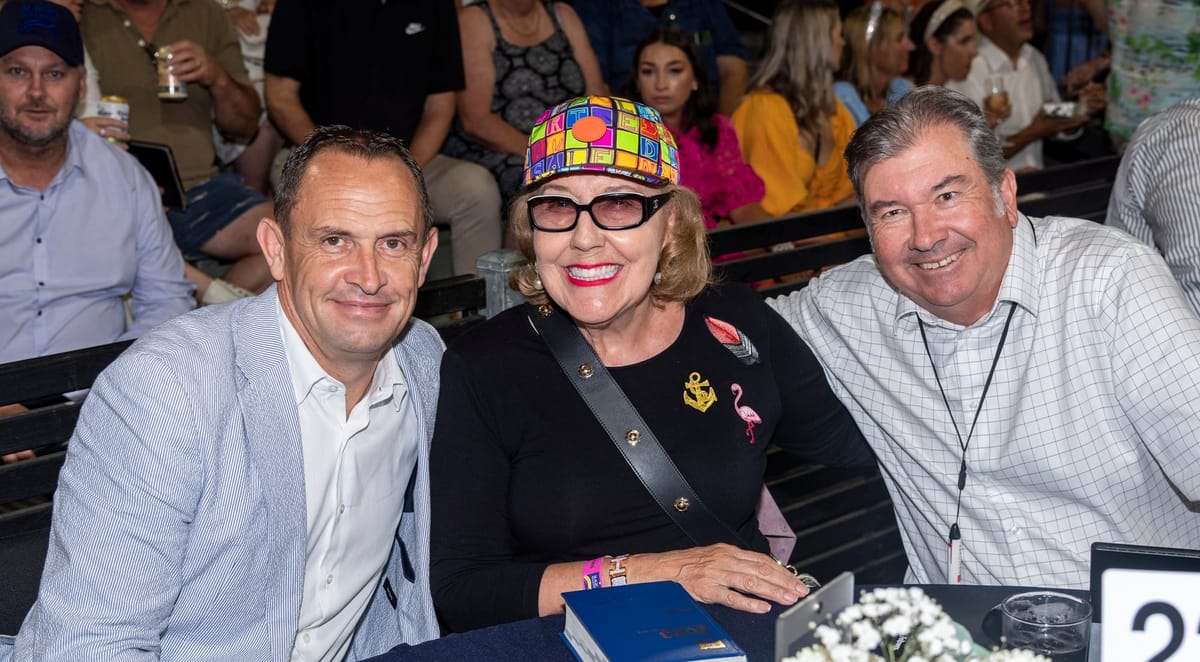
Three Bridges has given Toby Liston an opportunity to grow greener, breed greener and be greener, to the point where he’s now a bit of a botanist, amateur horticulturist and arborist. He reads up on the birds that come through and the natural damming of the Loddon, and he’s more hands-on with catchment management.
“We’ve given up 25 metres both sides of the river, which is called the riparian zone,” Liston says. “We’ve connected wildlife corridors to the river and hence the existing landscape, so that’s been a real positive. The trees we have in many places are what we call roadside remnant vegetation, and they look like boring trees but they’ve actually got a lot of life in them.”
Slowly, the Listons pulled out every exotic tree from Three Bridges. The willows went, replaced by native gums and black wattle. Black wattles are fast-growing and short-lived, but when they die, the gums have shot up around them and nature carries on.
The Listons also played their part in slowing down the Loddon with five strategic logs placed by catchment management down the channel. According to Liston, the best river is the slow river that it takes its sweet old time.
Greening Three Bridges Thoroughbreds is as much about its future sustainability as making it the best, most natural horse environment as possible. Liston is trying to replicate natural habitats, which means plenty of tree cover, plenty of space for young horses and a knowledge of endemic species.
There have been times when he has GPS-tracked the yearlings to discover they travel upwards of 20 kilometres a day in their 100-acre paddock, and data like this helps Three Bridges’ bottom dollar.
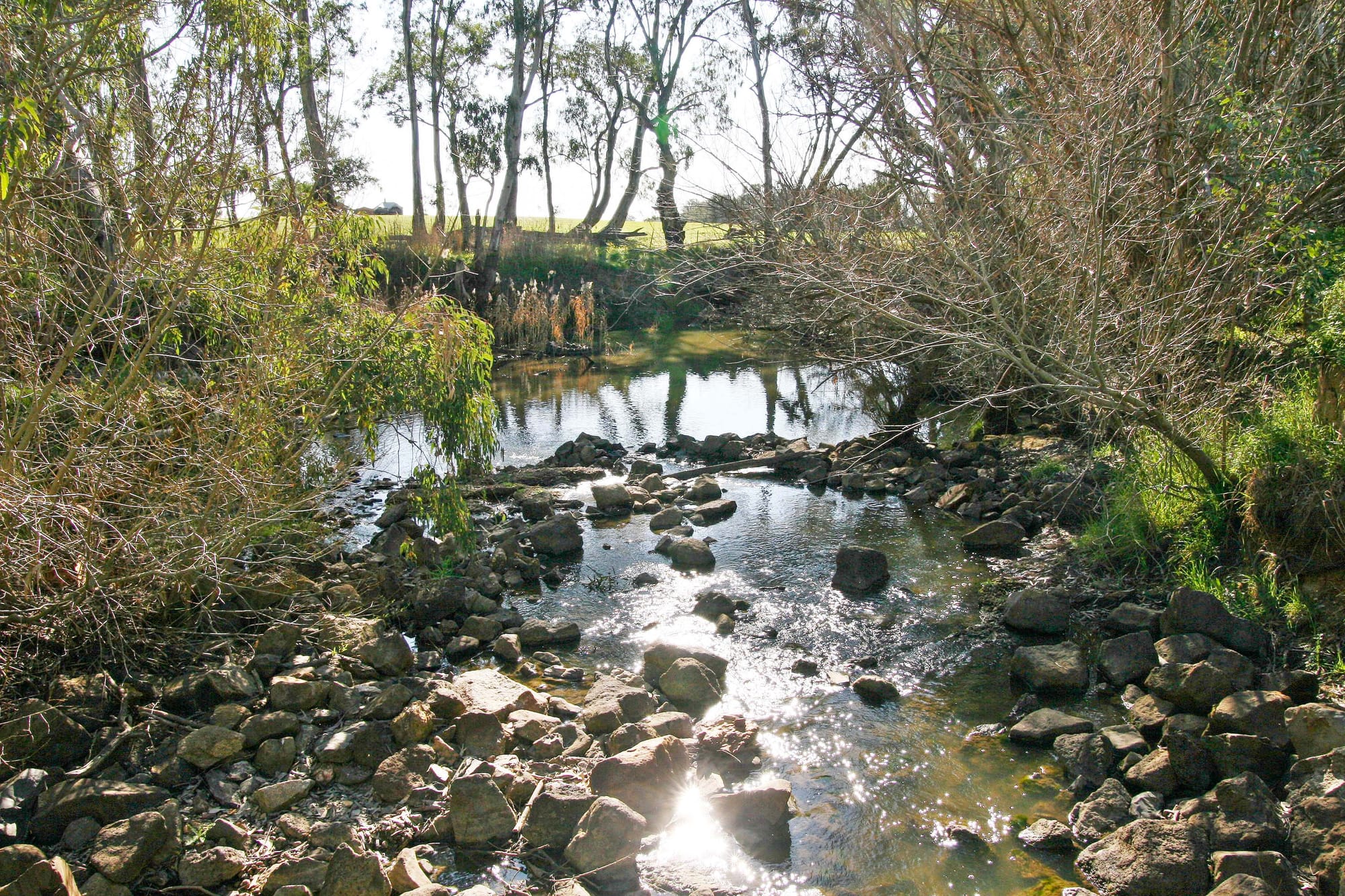
“Trainers these days want sound, tough horses, and we want to breed horses that will remain sounder and tougher for longer,” Liston says. “If they can’t stand up to our paddocks, we don’t feel confident selling them, and we will only sell the horses we raise and believe in.”
Three Bridges is in business to make money, and if it’s not making money, all the environmental good intentions will amount to little. But to Toby Liston, the calibre of yearlings is better than it’s ever been and he has no doubt the farm’s environmental savvy has a lot of do with that.
It’s an impossible thing to prove, but nothing is going to change his mind and, as such, he is driven to go that little bit further into carbon neutrality. It’s one of those concepts we hear about in the media, and among manufacturing and airline industries, but how does a horse farm with a handful of Land Cruisers, trailers and diesel machinery get it done, and what exactly is it?
“Getting to be carbon neutral is almost like having a calculator come to your farm,” Liston says. “They measure all your outputs, and then they measure all the positives on the farm, like the 60,000 trees we have planted, plus the plant diversity and any wetlands on the property.
“It’s basically all about biodiversity and changing the way old systems have been done. A good example of this is we slash all our own paddocks and mulch it all back in, and we’ve got a seeder that doesn’t disturb the soil.
“So all of this will be counted, if you like, as us offsetting any carbon emissions until we get to the point where all the positives out-measure the outputs. Then we’d be carbon neutral.”
The carbon credits system in Australia is complicated, and these days it’s a marketplace, but offsetting carbon basically means an activity that reduces emissions to compensate for emissions made elsewhere. In the case of Three Bridges, the 30-metre, tree-lined paddock perimeters might offset the emissions of the turbo diesel Land Cruisers that tow the horse floats, or the generators that power the floodlights during foaling season.
The Australian government’s FullCAM model inputs figures into the ‘calculator’, such as how many trees and in what configurations and where, which then uses a formula to calculate how much carbon will be removed from the atmosphere over a 25-year period. By most admissions, it’s an estimate, but it seems to be the future of things.
“There’s no financial incentive for us to do it,” Liston says. “It will probably cost us in the long run, but I think it would be lovely to say that the Three Bridges footprint is negative, that we’re selling naturally raised horses carbon-neutral. What could be better than that?”
The future of the carbon market is looking strong in Australia, with regulated environmental credits on things like water quality and biodiversity, and it’s an industry that’s only getting bigger.
"I think it would be lovely to say that the Three Bridges footprint is negative, that we’re selling naturally raised horses carbon-neutral. What could be better than that?"
It’s part of a greening culture worldwide, and one that farming isn’t immune to, but why is it spoken of so little when it comes to horse breeding?
“I couldn’t really answer that on behalf of the industry,” Liston says. “I can only speak on behalf of Three Bridges, but I know that everyone is looking into climate change right now.
“Half the world is in drought and the other half is in flood, and are humans contributing? Probably yes, but is it just a normal cycle? Whatever side of the fence you’re on, I don’t think you can say we’re not affecting the way of things to some degree.”
Like anything that comes to the environment movement, it takes effort to effect change. To Liston, it’s been an effort and an expense, but it hasn’t really been that hard over 15 years.
“We are now trying to affect our environment in a positive way at Three Bridges, and we’re trying to inspire others to do the same because, when you look down at it, it’s not actually that hard to do,” he says.
Carbon offsetting isn’t a loud conversation in the thoroughbred breeding industry, and perhaps it should be. Are the European trees, pretty as they are, counter-intuitive on the bigger, showpiece farms? Should the manicured lawns and post and rail be reconsidered for looser, more fruitful bee habitats and hedging?
“It’s horses for courses,” Liston says. “There aren’t many farms that have to make a living out of it, and ours is a working farm, like Yarraman and Mill Park. Those are three big family operations that come to mind.
“I’d love to have a full-time gardener, but the reality for us is that our gardener comes once a week. My dream is to have a showpiece farm, but to deliver it is expensive and very hard.”
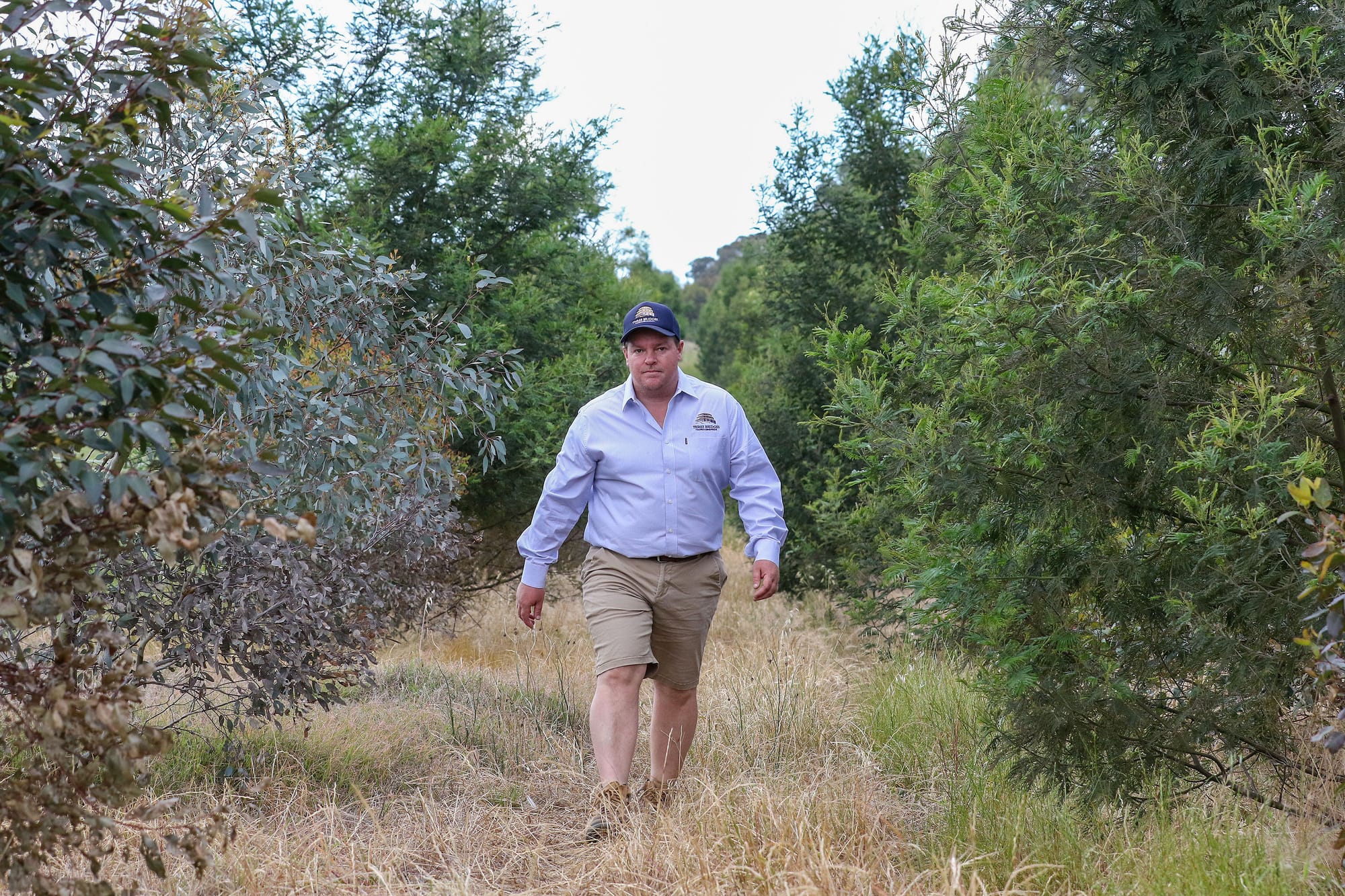
Liston says the showpiece horse farms inspire him to be better.
“They don’t make your horses run any faster, but they look beautiful,” he says.
Always, Toby Liston is the straight-talking, hard-thinking, fast-moving father, farmer and breeder. He doesn’t wait for anyone else to do something he could do himself, and he isn’t distracted by sentiment, as a lot of country folk aren’t.
He might be a greenie with all this carbon talk, but there’s no doubt that what he stands for is what he stands on at Three Bridges Thoroughbreds.
“I just think there’s something amazing in leaving something that’s going to live for hundreds of years, don’t you?”
The article was written for the Magic Millions magazine in 2023 and has been republished with permission. The 2024 edition of the Magic Millions magazine is now available.

